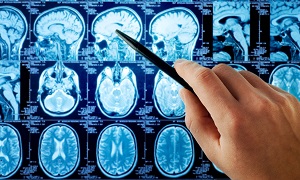Brain Hemorrhage
Brain hemorrhage is a type of stroke that is caused when an artery in the brain bursts. This can lead to localized bleeding in the surrounding tissues. This kind of bleeding is known to kill brain cells.
People, who generally experience a brain hemorrhage, have symptoms similar to that of a stroke, and they can also develop weakness on one side of their body, difficulty in speaking or experience a sense of numbness.
Symptoms
If you are exhibiting any of the following symptoms, then you might be having a brain hemorrhage:
- A sudden severe headache
- Seizures with no history of seizures previously
- Changes in vision
- Numbness or tingling
- Weakness in an arm or a leg
- Nausea or vomiting
- Decreased alertness or Lethargy
- Difficulty speaking or understanding speech
- Difficulty in swallowing
- Difficulty reading or writing
- Loss of fine motor skills, such as hand tremors
- Loss of balance
- Loss of coordination
- Abnormal sense of taste
- Loss of consciousness
However, it is notable that many of these symptoms are also often caused by conditions other than brain hemorrhages.
Causes & risk factors
The most common cause of a brain hemorrhage is generally elevated blood pressure. Over time, high blood pressure can lead to the arterial walls getting weakened, which can lead to a rupture. When this occurs, blood collects in the brain, which can cause symptoms of a stroke.
Some of the other causes and risk factors of a brain hemorrhage include:
Head Trauma- For people younger than the age of 50, injury is the most common cause of bleeding in the brain.
Aneurysm- This is a weakening in a blood vessel that swells. It can burst and bleed into the brain, leading to a stroke.
Blood Vessel Abnormalities- Weaknesses in the blood vessels in and around the brain, might be present at birth, and they can only be diagnosed if symptoms develop.
Amyloid angiopathy- This is an abnormality in the walls of the blood vessels that can sometimes occur with high blood pressure or aging. It might lead to several small, unnoticed bleeds before it leads to a large one.
Liver Disease- Generally, this condition is associated with increased bleeding.
Blood or bleeding disorders and brain tumors can also increase the risk of a hemorrhage.
Diagnosis
If any kind of stroke is suspected, it is important to perform an evaluation immediately. The examination might reveal evidence of brain injury with weakness, slurred speech as well as the loss of sensations. A radiology examination such as a CT scan or an MRI is also sometimes necessary. It can help to highlight various features and locations of brain bleeding. If bleeding inside of or around the brain is noted, then your doctor might recommend further testing, to determine the cause of the bleeding.
This additional testing might help in determining if abnormal blood vessels are present as well as the next step in diagnosis or treatment.
Treatment
Close monitoring is very essential for patients with bleeding inside the brain. Early treatment can include stabilizing blood pressure and breathing. A breathing assist machine, i.e. a ventilator, can be required as well, to ensure that enough oxygen is supplied to the brain as well as other organs.
Intravenous access is also required so that fluids and medications can be given to the patient, especially if he/she is unconscious. Sometimes specialized monitoring of heart rhythms or pressure inside the skull as well as blood oxygen levels are also needed.
Once the patient is stabilized, then the doctors can determine how to address the bleeding. This process generally takes place rapidly. The decision of performing surgery is based on the location and the size of the hemorrhage. Surgery is not required for all patients with intracranial hemorrhage.
There are also various medications which can be used to help decrease swelling around the area of the hemorrhage.
Prevention
Since the majority of brain hemorrhages are associated with certain risk factors, you can minimize the risk in the following ways:
- Treat your high blood pressure- According to studies, 80% of cerebral hemorrhage patients have a history of high blood pressure. The most important thing is to control it through exercise and proper diet and medication.
- Don’t smoke.
- Refrain from using drugs- Drugs such as cocaine can increase the risk of bleeding in the brain.
- Drive carefully- If you are driving a four-wheeler, remember your seat belt. If you are driving a two-wheeler, remember your helmet.


